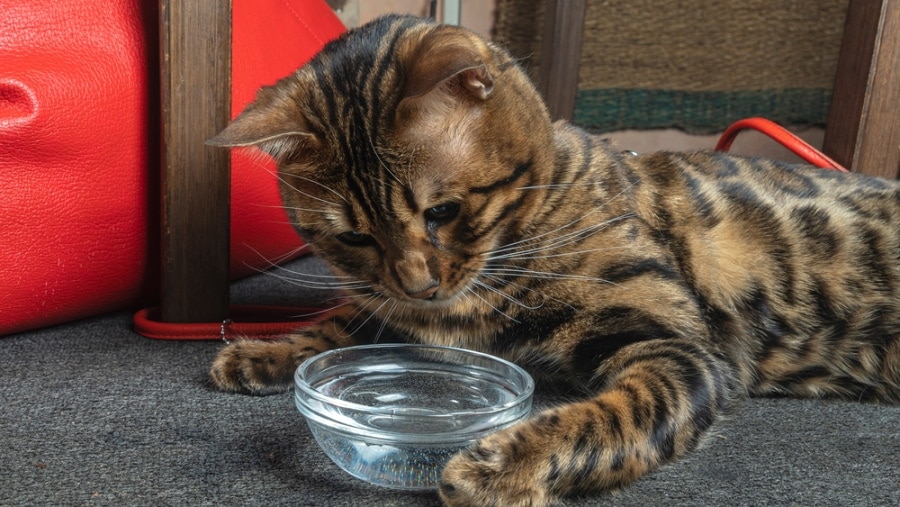Click to Skip Ahead
When you think of behavior training for a pet, you typically think of dogs. However, despite their well-known stubborn and independent streaks, it’s completely possible to train a cat to sit.
It’s going to take persistence and timing, but if you’re patient and loving, you’ll be able to train your cat to sit in no time! You can also train them to complete many other tasks if you stick with it.

How to Teach a Cat to Sit in 9 Steps
It’s not as easy to train a cat as a dog, but it’s certainly possible. If you follow these steps and stay consistent, and you should have your cat sitting for you in no time.
Keep the training sessions short, about 1 to 3 minutes, and practice twice a day. This keeps your cat interested in the training sessions, but you won’t end up overdoing it.
1. Find Their Favorite Treat

Unlike with dogs, you’re not going to get your cat to sit for you through positive reinforcement alone. That’s why finding your cat’s favorite treat is so important. Find something that they absolutely love, and only give it to them during training sessions.
You want to associate the treats solely with a specific action, not something that they can get by doing anything else. Training treats should be super small, to avoid losing your apprentice’s attention, so make sure it is something tiny or something that you can break into smaller pieces.
2. Remove Distractions
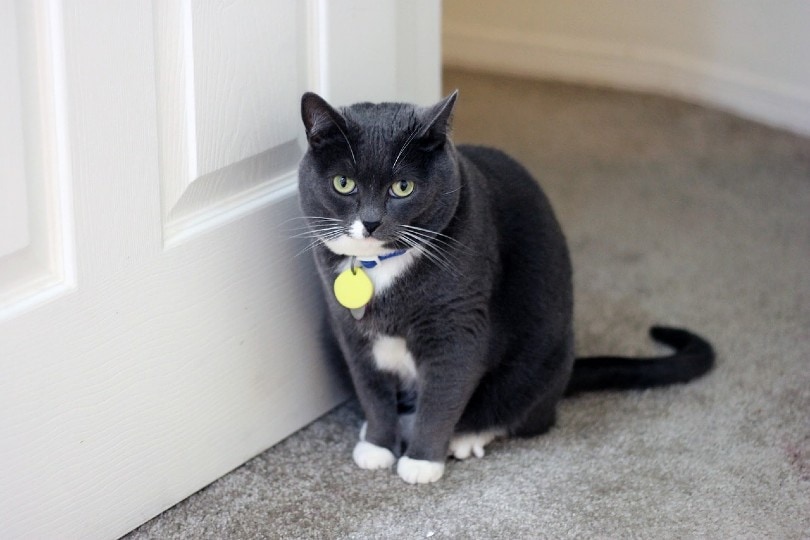
Think of your cat like an overexcited toddler. They want to listen, but sometimes that flashing light or cars driving by in the background is just too much to ignore. If you want your cat to keep listening to you, find a calm area without distractions.
This keeps your cat’s attention on you, and that’s exactly what you need when you’re trying to train them to do something.
3. Put the Treat Above Their Head
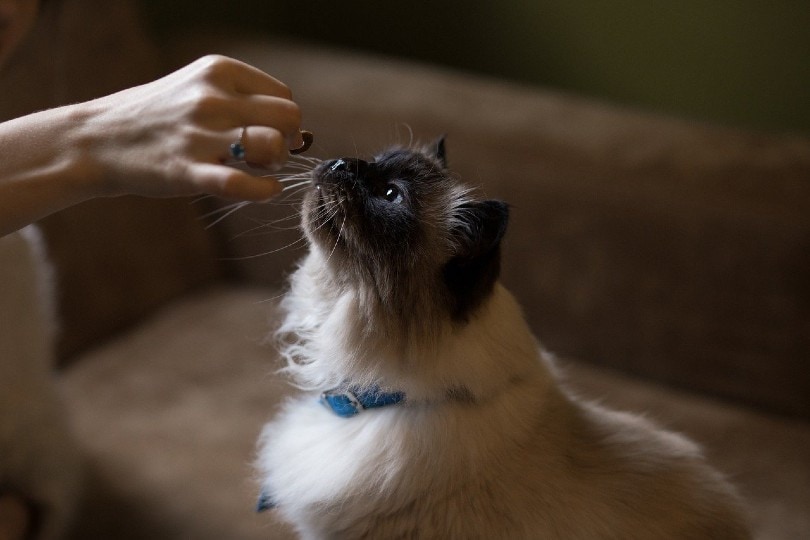
Now that you have your cat in a calm environment with their favorite treats in hand, it’s time to start the training. Put the treat in between two fingers in a way that your cat can see it. Then, raise the treat above your cat’s head, just out of their reach.
To keep their eyes on the treat, they should have to sit down, which is what you’re going for. When they sit, use a vocal command like “sit” to pair the action with.
4. Reward Them

Once your cat sits, immediately reward them with a treat. While you can pair the treat with praise if you like, keep in mind that cats don’t respond to praise the same way dogs do. Cats don’t dislike praise, but they don’t find it particularly rewarding, so it doesn’t serve as a strong reinforcer.
It’s essential to give your cat a treat every time they sit, as this motivates them to repeat the behavior. Pairing praise with the treat can help create a positive association over time, which may make praise more meaningful for your cat in the future. However, since cats are not naturally inclined to seek approval, relying on praise alone can diminish the value of the behavior and reduce their likelihood of responding as desired.
5. Keep Practicing
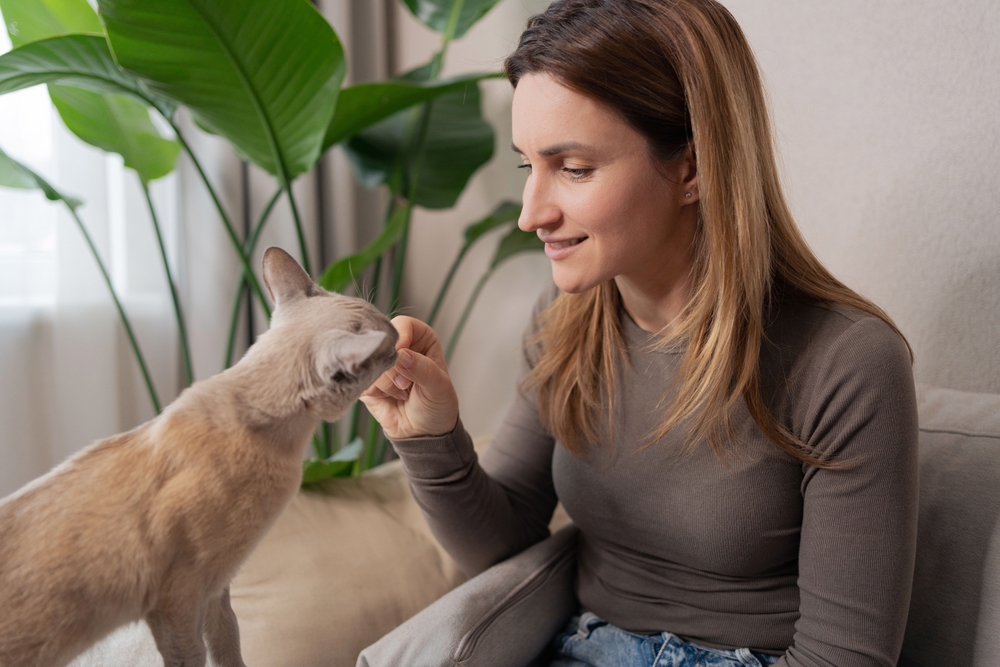
It takes longer to train a cat than it takes to train a dog, so have patience and stick with it. Complete training sessions twice a day for at least 2 minutes each time, with anywhere between 1 and 3 minutes being the ideal amount of time.
The more consistent you are, the faster your cat will pick up on the training and start consistently doing what you want.
6. Avoid Punishment

Cats do not respond well to negativity or punishment of any form. If you are not careful and keep things positive they’re more likely to associate you with negative outcomes and start avoiding you than to do what you want. So, if you feel your frustration rising during a training session, just stop. If you can not find a way to help them be successful, it is better to try another time.
7. Reduce the Hand Movements
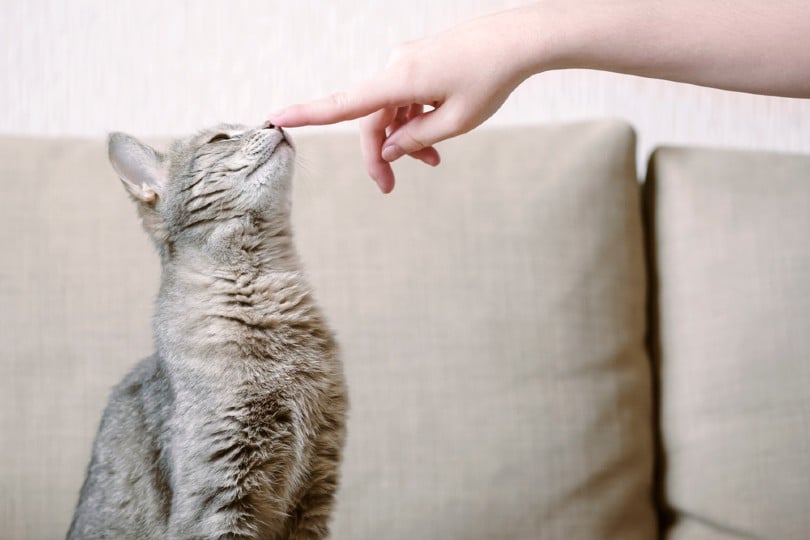
Once your cat is consistently sitting with the full hand motion, slowly move the treat farther back so they don’t have to look up to see it. Keep using the vocal command to get them to sit. Every time they master the new location, move your hand back and down farther until it doesn’t matter where your hand is.
8. Slowly Wean Off the Treats

Now that you can get your cat to sit every time you say command it, start to wean them off the treats. Instead of giving them treats every time they sit down, give them a treat every other time. Keep doing this until they sit even if you don’t have the treats with you, but do try to offer a variety of reinforcers, from a chin rub to a chance to play with their favorite toy, you know your cat and his likes best.
9. Reward Intermittently
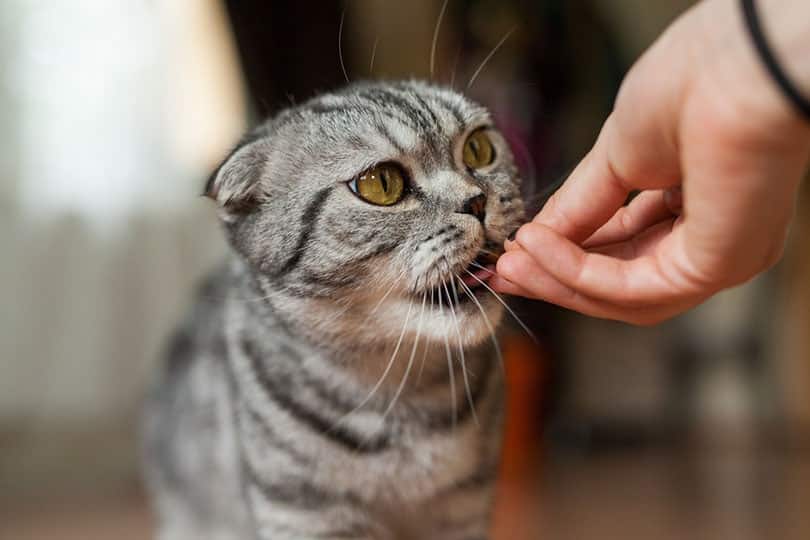
Cats need a reward to keep listening. If they feel like they’re never getting treats for their efforts, they’re going to stop. So, even after they master the command, ensure that you have treats on hand and reward them occasionally when they listen. That way, they don’t know if a treat is coming or not, and they’ll listen whenever you tell them to sit.
Other Tricks to Teach Your Cat
Now that you know how to get your cat to sit, what other tricks can you teach them? While this list is far from comprehensive, here are three other tricks that you can teach your cat.
Stay

If you want to teach your cat to stay in one place while you’re trying to do something, teaching them to stay is a great trick. Even better, you can use many of the same principles from teaching them to sit — you just don’t give them the treat until a little later each time!
Lie Down
Once you have your cat sitting down, you can teach them to lie down. Simply move the treat underneath them after they sit down. They will have to look and lie down to reach the treat. It takes a bit more patience than sitting, but it’s possible with enough persistence.
Come
There are a few different ways to teach this trick, but it’s easiest with a treat bag or container. Just shake the treat container around, and when your cat comes running, give them one or two. Staying consistent is key, so you can get your cat to come running anytime you shake the treat bag or container. The only problem with this method is that coming will only work if you have the treat bag or container handy!

Final Thoughts
While it takes patience and persistence to teach your cat to sit, having a well-trained cat is a perk all its own. But if that’s not enough to get you through the training sessions, just think of the looks on your friend’s faces when you tell your cat to sit and they listen!
So, stick with it and train your cat to sit. It’s a great bonding experience for you both, and you get a well-trained cat as a result!
See Also:
Featured Image Credit: Yves, Pixabay




